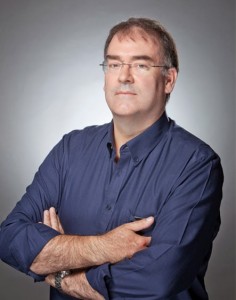 Matt Aitken, the Hobbit’s Visual Effects Supervisor, talks about the realization of The Hobbit: The Desolation of Smaug in a recent interview with Flickering Myth.
Matt Aitken, the Hobbit’s Visual Effects Supervisor, talks about the realization of The Hobbit: The Desolation of Smaug in a recent interview with Flickering Myth.
Aitken was supported by the Senior Visual Effects Supervisor Joe Letteri and Visual Effects Supervisor Eric Saindon from Weta Digital during the realization of The Hobbit trilogy.
Aitken firstly talks about Beorn’s character. He says that they didn’t want to recreate the typical transformation of the werewolf for Beorn, as we have already seen in many cinematic sequences, but they still had to be able to shoot a scene that would allow the public to understand that “the guy you see is the bear in the human form”.
“Once we had all of that encapsulated into a creature rig that supported the transformation and a digital puppet which had a slider control with one end being the bear and the other end being the human, we gave those to our animation team. They spent a lot of time refining the performance aspect and split up the parts of his body that transform so it’s not like an overall bear through to human transformation.”
Another challenge has been to represent Thranduil’s woodland realm, says Matt Aitken. “The part of the realm where Thandruil has his throne is huge; it’s several hundred metres long. The balance we tried to strike there was to have a sense of daylight filtering in without ever seeing the source of that daylight. We never revealed places were the walls of the realm were open and exposed to the outside areas. We never saw direct daylight or foliage. We played it as if it was tucked around corners and further away.” The water was another key element, because it was they way the company uses to escape from the kingdom, so “it was important to establish that there was water around the outside but also running through the kingdom.”
Finally Aitken talks about the realization of Smaug the dragon and his incredible size, in fact “he’s twice the size of a 747 jumbo jet”. “Smaug couldn’t move like a puppy he had to lumber. We drive the skins of our creatures by simulated biomechanical musculature and skeleton rigs. The animators will key frame animate the skeleton and the movement of the skeleton will drive the simulation of the muscles. The muscles will flex and bulge according to what the skeleton is doing and get the secondary dynamics in the movement of the skin.”
Middle-earth News recently interviewed Benedict Cumberbatch about his performance as Smaug and we know that he was filmed on the motion-capture stage doing some performance tests, but Aitken reveals that they “never used any of that directly. We used it as visual reference to inform the character.” So Benedict Cumberbatch’s motion capture was used only as a reference and Smaug’s true movements were all created digitally.
You can read the full interview at Flickering Myth website.


